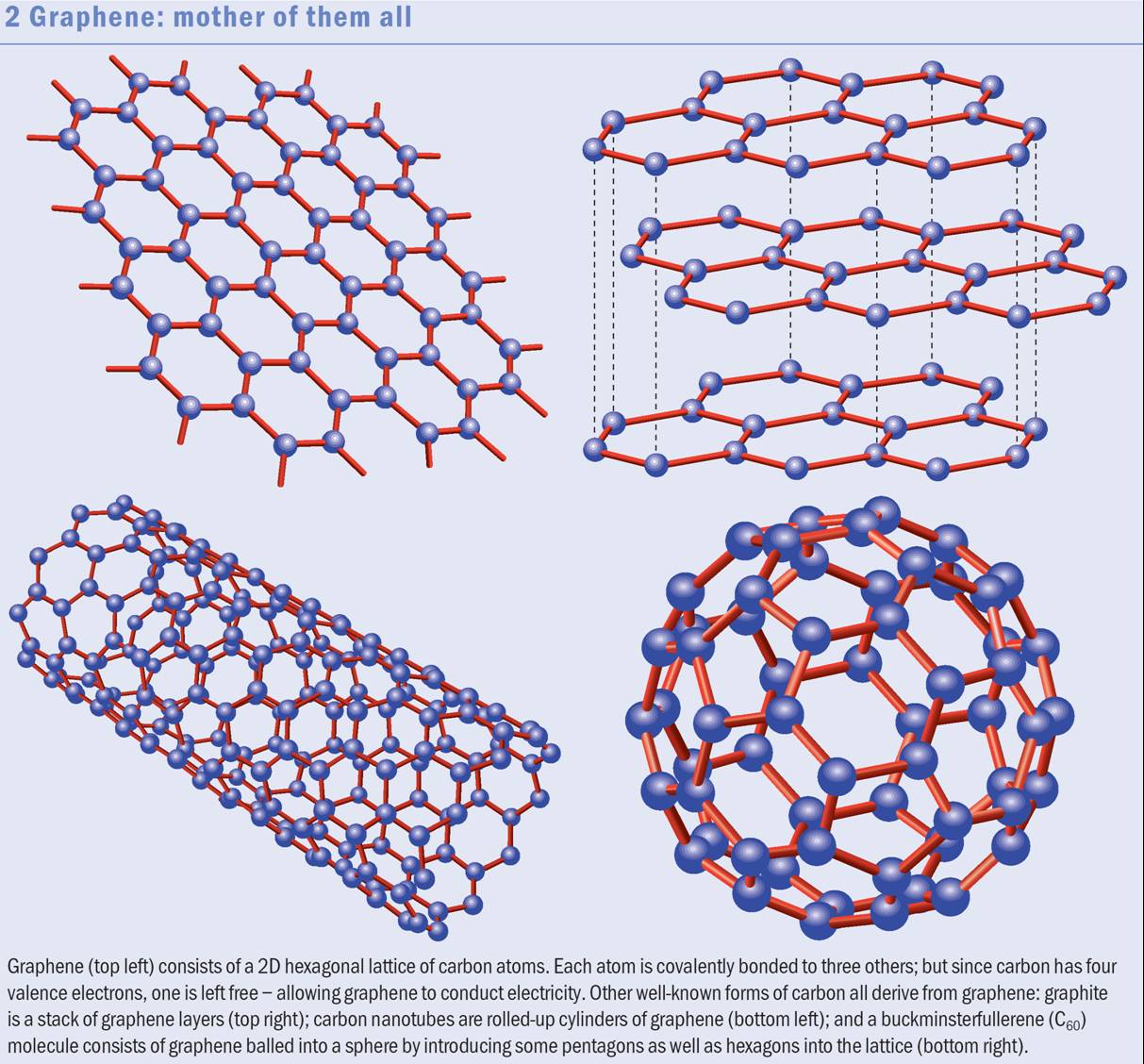Graphene is a two-dimensional (2D) material in the form of carbon on the honeycomb lattice
that is the "mother" of all other allotropic forms of carbon: zero-dimensional (0D) fullerenes or buckyballs,
one-dimensional (1D) carbon nanotubes, and three-dimensional (3D) graphite. Graphene was discovered in 2004
by Andre Geim's group at Manchester University in England. The electronic properties of graphene are
very unusual because the elementary excitations are not ordinary electrons but Dirac fermions, relativistic
particles that propagate with a velocity which is 300 times smaller than the speed of light. Hence, graphene
can be used as a bench-top particle-physics laboratory to study fundamental interactions in matter. Furthermore,
graphene can be studied to be used as electronic devices such as atomically thin transistors, electronic waveguides,
and sensitive chemical sensors. Read more here:
|
"
Drawing conclusions from Graphene'', A. H. Castro Neto, F. Guinea, and N. M. R. Peres, Physics World,
November 2006
|
|

